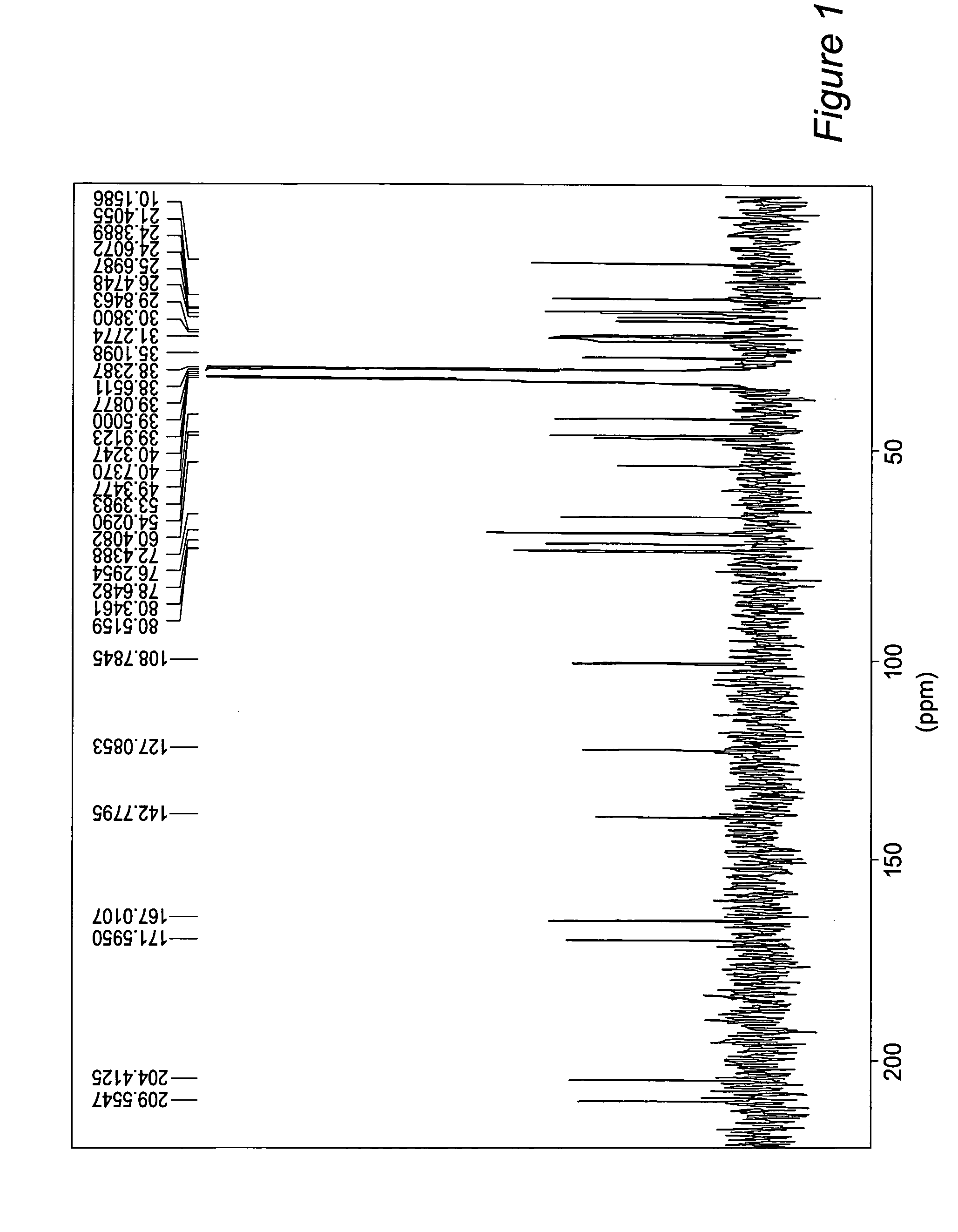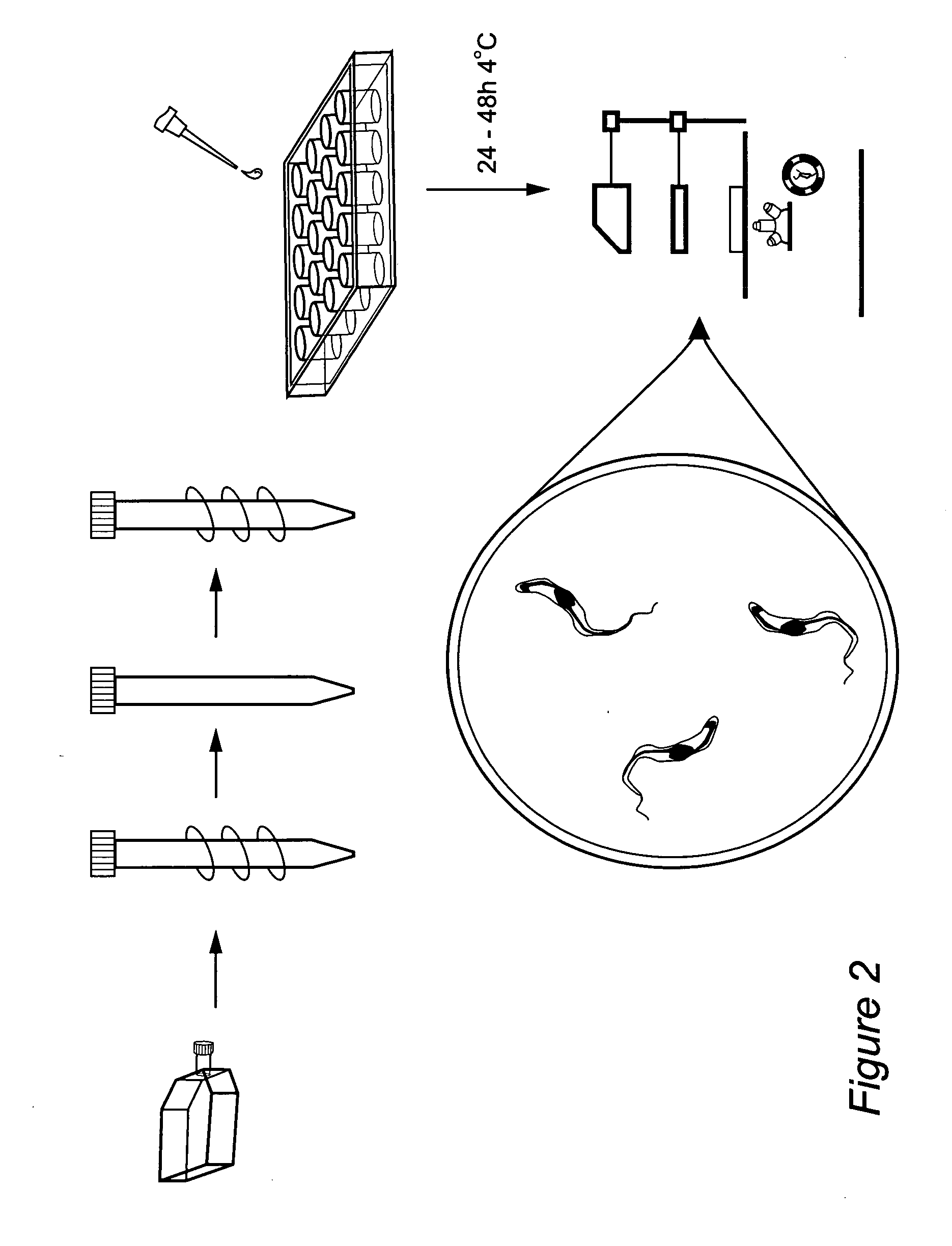Process for isolating physalins from plants and pharmaceutical compositions containing physalins
a technology of physalin and isolating process, which is applied in the direction of plant/algae/fungi/lichens ingredients, organic chemistry, biocide, etc., can solve the problems of inability to use widely, heart failure and premature death in mild life, and inability to treat the chronic forms of diseas
- Summary
- Abstract
- Description
- Claims
- Application Information
AI Technical Summary
Benefits of technology
Problems solved by technology
Method used
Image
Examples
example 1
Isolation of Physalins from Physalis spp. Roots
[0057] 330 g of dried roots of P. angulata were cut in small pieces, ground and extracted with ethanol by heating in a Soxhlet extractor. The obtained extract was concentrated to dryness under reduced pressure and the resulting syrup material was washed with chloroform, in a proportion of about 3 to 5 times of the obtained weight. Then, the soluble fraction was partially evaporated and poured over a layer of silica H (gel) for filtration using, in a sequential fashion, hexane, dichloromethane, ethyl acetate and methanol as solvent extractor.
example 2
Isolation of Physalin B from Physalis spp. Roots
[0058] The dichloromethane fraction obtained in example 1 was treated again in a chromatographic column with silica G (gel). Physalin B was eluted with an ethyl acetate-hexane gradient and recrystallized.
example 3
Characterization of Physalin B
[0059] Physalin B was characterized using no more than routine spectroscopic methodology and the data obtained are shown below.
[0060] Physalin B has a melting point in the range of 235-237° C. It shows a molecular ion peak at m / z 510 (M+) and its 1H NMR (200 MHz) DMSO-d6 spectrum presents signals at δ 5,88 (H2,dd,J=10 Hz) and δ 6,90 (H3, dd,J=10 Hz) for the same olefinic protons. Those values represent the absorptions of the hydrogen atoms linked to C2 and C3 which are attached to A ring. Three methyl groups are showed at δ 1,19 (H19,s); δ 1,88 (H28,s) and δ 1,26 (H21,s). A pair of signals at δ 3,67 (d,J=13 Hz) and δ 4,32 (dd,J=13, 2 Hz) could be attributed to the methylene protons at C-27, confirming the oxyrane bridge at Cl4—O—C27. The hydroxylproton at δ 6,27 (H13,s) and a doublet at δ 5,68 (H6,dd) were a good tool to make sure that the molecule is physalin B. 13C NMR (54 MHz) in DMSO-d6, showed twenty six signals. The missing two carbons from the ...
PUM
| Property | Measurement | Unit |
|---|---|---|
| concentration | aaaaa | aaaaa |
| melting point | aaaaa | aaaaa |
| temperature | aaaaa | aaaaa |
Abstract
Description
Claims
Application Information
 Login to View More
Login to View More - R&D
- Intellectual Property
- Life Sciences
- Materials
- Tech Scout
- Unparalleled Data Quality
- Higher Quality Content
- 60% Fewer Hallucinations
Browse by: Latest US Patents, China's latest patents, Technical Efficacy Thesaurus, Application Domain, Technology Topic, Popular Technical Reports.
© 2025 PatSnap. All rights reserved.Legal|Privacy policy|Modern Slavery Act Transparency Statement|Sitemap|About US| Contact US: help@patsnap.com



